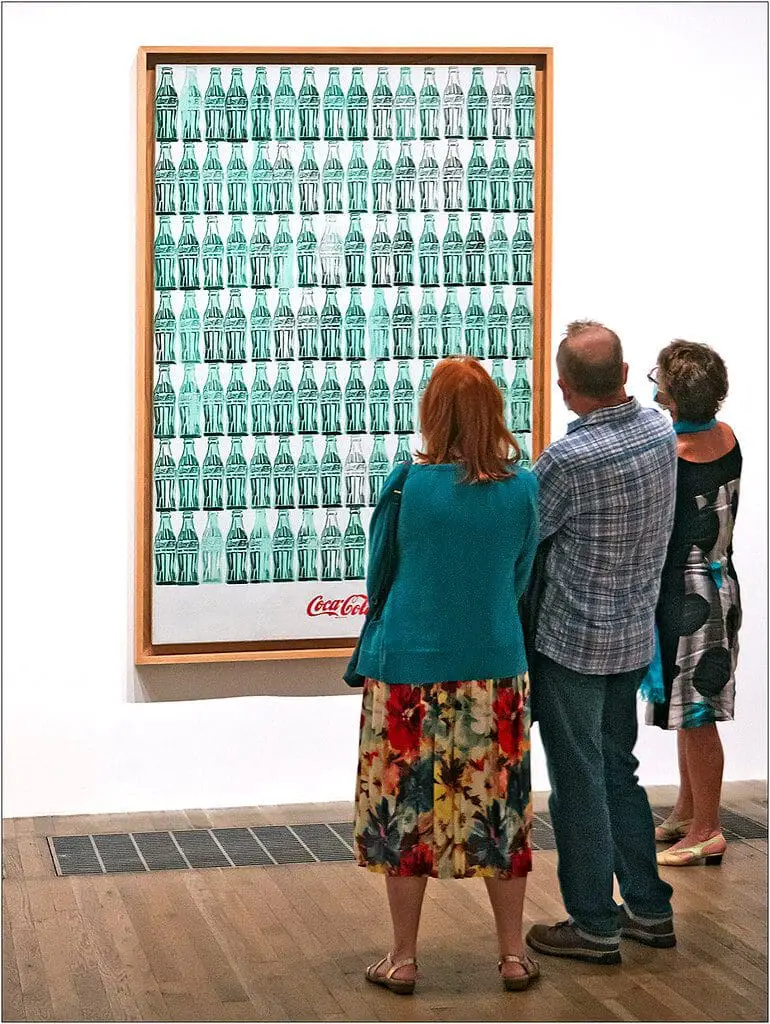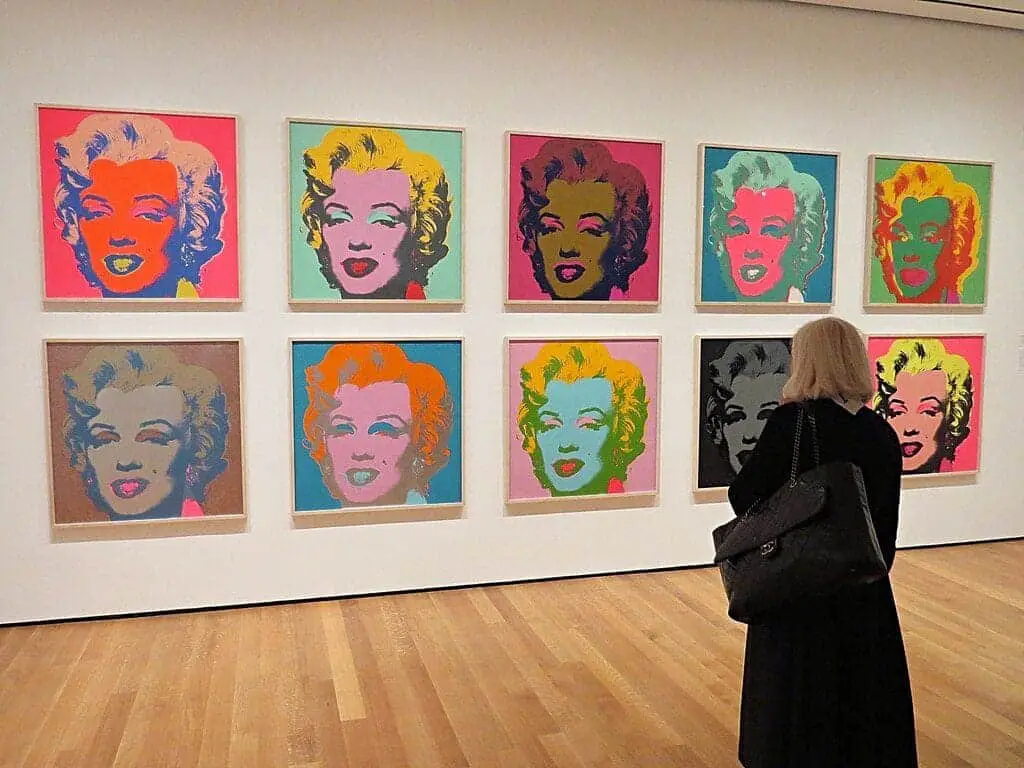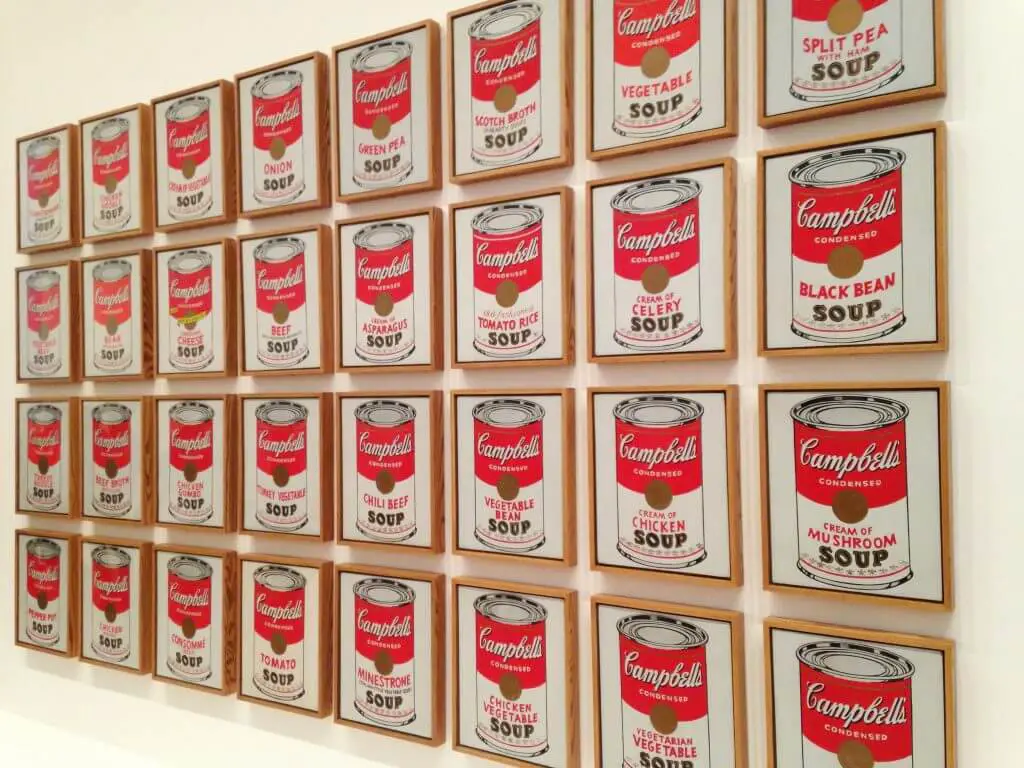Art has long been a vehicle for challenging the status quo, deconstructing perceptions, and pushing the boundaries of creativity. Few artists encapsulate this spirit of defying norms as profoundly as the enigmatic Andy Warhol, a key figure in the pop art movement of the mid-20th century.
Warhol’s innovative, eclectic, and sometimes controversial style shaped an entirely new genre of art, integrating aspects of commercial and popular culture into a traditionally elite space. His work, a dialogue between the ordinary and the extraordinary, the mundane and the meaningful, continues to captivate audiences worldwide. One of the defining characteristics of Warhol’s artistic approach is his deliberate and impactful use of repetition.
Table of Contents
- The Power Of Repetition In Andy Warhol’s Art: An Exploration Of Mundanity And Meaning
- Warhol’s Challenging Of Conventions With The Campbell’s Soup Cans
- Repetition And Ritual In Warhol’s Work Explored
- The Profound Impact Of Warhol’s Repetition On His Art
- Frequently Asked Questions
- Related Questions
The Power Of Repetition In Andy Warhol’s Art: An Exploration Of Mundanity And Meaning
Andy Warhol was a master of using repetition in his artwork. From Campbell’s soup cans neatly lined up to Marilyn Monroe’s face multiplied across a canvas, Warhol turned repetition into a form of art.
His technique was simple, yet the effect was striking – forcing viewers to confront the commonplace in an entirely new light.
There is a power and genius in how he used repetition to transform the mundane into something significant and reshaped our understanding of what art could be. Warhol’s revolutionary techniques uncover the complex layers of societal commentary embedded in his works.
Andy Warhol And The Art Of Repetition
Andrew Warhola, popularly known as Andy Warhol, was one of the pioneers of the Pop Art movement – an art genre that blurred the boundaries between fine art and mainstream aesthetics. Bright colors, screen printing techniques, and everyday objects characterize Warhol’s art. But perhaps most fascinating is his strategic use of repetition.
Warhol’s most iconic works, such as Campbell’s Soup Cans, Marilyn Monroe, and Coca-Cola Bottles Series, present everyday objects and famous figures in patterns of relentless repetition.

This technique of serial repetition was at the heart of his artistic practice and perhaps its most controversial aspect.
Andy Warhol himself said this about this use of repetition:
“My fascination with letting images repeat and repeat – or in film’s case ‘run on’ – manifests my belief that we spend much of our lives seeing without observing.”
Andy Warhol
Warhol’s Use Of Repetition Was Misunderstood By Many
There’s no doubt that Warhol’s use of repetition caused a stir in the art community. Some critics argued that his repeated images reduced art to the level of mass-produced commodities, stripping it of its uniqueness and value.
To these critics, Warhol’s technique seemed to echo the mechanized monotony of factory production lines and cheapen the art by replacing originality with replication.
However, it’s essential to consider that Warhol’s method was deliberate and highly innovative. His approach to art mirrored the rising consumer culture of his time, where products were being replicated and marketed on a massive scale.

This technique can be interpreted as a satirical critique of consumer society, a commentary on the nature of art and originality, or even a reflection of Warhol’s fascination with uniformity and monotony.
Those who look beyond the surface of Warhol’s repeated images will find a brilliant exploration of themes like conformity, mass culture, and the mechanization of modern life. His art forces us to confront the often-overlooked mundanity of our everyday existence, challenging us to find beauty and significance in the ordinary.
The genius of Warhol’s repetition technique lies in its simplicity and the depth of interpretation it invites. His art refuses to be boxed into traditional definitions and instead celebrates the every day, the mass-produced, and the mundane.
Rather than diluting the value of art, Warhol’s use of repetition enhances it, pushing boundaries and prompting a more profound engagement from the viewer.
Warhol’s Challenging Of Conventions With The Campbell’s Soup Cans
Warhol’s use of repetition is profoundly evident in his 32 Campbell’s Soup Cans series. Each canvas features a painstakingly accurate depiction of a soup can – objects so mundane and ordinary that they would be at home in any American kitchen.
Warhol’s decision to paint these items in meticulous detail and repeat the same motif in 32 variations was a direct challenge to the conventional artistic values of the time.
In speaking of Campbell’s soup, he said:
“I used to drink it [Campbell’s Soup]. I used to have the same lunch every day, for twenty years, I guess, the same thing over and over again.“
Andy Warhol
Warhol showed us that he painted what he wanted to paint. His response to criticism of what he painted and why was typically nonchalant.
He stated he liked the soup, and it was a staple of his daily diet. But the more profound implications of his art run far beyond a simple love for a particular brand of canned soup.
Repetition And Ritual In Warhol’s Work Explored
By repeating the same image repeatedly, Warhol evoked a sense of ceremonial, everyday life. His art captures the familiar routine of daily existence and the consumer culture pervading America at the time.
Warhol turned the mundanity of everyday life into a spectacle that commands attention and contemplation, daring the viewer to find depth and meaning in the most commonplace objects.

Warhol’s repetitive art also offers a critique of contemporary artistic practices. At a time when Abstract Expressionism was the dominant style, Warhol’s repetition and focus on everyday objects stood out as a refreshing, provocative alternative.
Interpreting Warhol’s Repetition
Warhol’s art is multi-layered, and his repetition invites various interpretations. It can be seen as a critique of mass consumer culture, a statement on the mechanized production processes of the modern age, or a reflection of his routines and obsessions.
Perhaps one of the most intriguing aspects of Warhol’s repetitive art is its ability to remain captivating regardless of the interpretation. Whether viewed as a simple Campbell’s soup can or a statement on the homogeneity of modern life, Warhol’s art demands attention and engagement from the viewer.
The Profound Impact Of Warhol’s Repetition On His Art
Warhol’s use of repetition played a crucial role in his artwork. By taking mundane, everyday objects and repeating them, he elevated the banal to the level of art and challenged viewers to find meaning in the ordinary.
His repetitive works serve as a commentary on various aspects of society, from consumer culture to the nature of artistic expression. Warhol’s art forces us to reconsider what we perceive as mundane and prompts us to find beauty, meaning, and thought-provoking commentary.
This exploration of repetition in Warhol’s art underscores his talent for engaging viewers and provoking thought, making him one of the most influential artists of the 20th century.
Frequently Asked Questions
Why did Andy Warhol choose repetition as a prominent feature in his art?
Andy Warhol’s use of repetition is a distinctive aspect of his artistic style. Understanding the motivation behind this choice provides insight into the conceptual underpinnings of his work.
How does repetition contribute to the transformation of mundane subjects in Warhol’s art?
Explore how Warhol’s repetition of seemingly mundane subjects elevates them to a level of significance and prompts viewers to reconsider the ordinary in a new light.
What role does repetition play in Warhol’s exploration of consumer culture and mass production?
Delve into the connection between repetition in Warhol’s art and his commentary on the impact of consumer culture, mass production, and the commodification of everyday objects.
Can you highlight specific artworks where Warhol’s use of repetition is particularly impactful?
Identify key pieces in Warhol’s body of work where repetition serves as a powerful artistic device, transforming the meaning and perception of the subjects.
How does repetition function as a form of social commentary in Warhol’s art?
Examine the social implications embedded in Warhol’s repetitive approach, considering how it reflects and comments on the cultural landscape of his time.
What techniques did Warhol employ to achieve effective repetition in his art?
Explore the technical aspects of Warhol’s artistic process, including the methods and tools he used to create visually striking repetitions in his works.
In what ways does repetition contribute to Warhol’s exploration of fame and celebrity culture?
Analyze how Warhol’s repetition of iconic figures and celebrities intersects with his broader exploration of fame, celebrity, and the concept of the “15 minutes of fame.”
How did Warhol’s use of repetition challenge traditional notions of artistic uniqueness and originality?
Examine the philosophical implications of Warhol’s repetition in the context of the art world, questioning established norms of uniqueness and originality.
Did Warhol’s contemporaries respond positively or negatively to his use of repetition in art?
Explore the critical reception of Warhol’s repetitive style during his time, considering both positive and negative reactions from fellow artists and critics.
How does repetition in Warhol’s art continue to influence contemporary artists and popular culture?
Investigate the lasting impact of Warhol’s repetitive techniques on subsequent generations of artists and the broader cultural landscape, exploring echoes of his approach in today’s art and media.
Anita Louise Art is dedicated to art education, great artists, and inspiring others to find and create their art. We love art that uplifts and inspires. #ArtToMakeYouSmile! #ArtToMakeYouHappy!
If you are interested to see any of my art, you can find out more by clicking here. If you are interested in what inspires me and my paintings, you can discover more by clicking here.
We have a free newsletter and would love you to be part of our community; you can subscribe to the newsletter by clicking here. If you have any questions, I would be happy to talk to you anytime. You can reach me, Anita, by clicking here.
Subscribe to our Anita Louise Art YouTube Channel with great videos and information by clicking here.
Join us for our podcast “5 Minutes With Art.” Spend just 5 minutes a week with us to discover and learn about great art and artists. You can find out more about our podcast by clicking here.
Related Questions
Which Ear Did Van Gogh Cut Off Left Or Right? And Other Facts
Vincent Van Gogh cut off his left ear; he painted several paintings of himself with the bandaged ear. The events leading up to the ear cutting were because of artistic disagreements with the artist Paul Gauguin. Cutting off his left ear made the local newspaper’s front page and set off a chain of events that would change Vincent Van Gogh’s life forever.
By clicking here, you can discover more by reading Which Ear Did Van Gogh Cut Off Left Or Right? And Other Facts.
Why Did Vincent Van Gogh Commit Suicide?
Vincent Van Gogh had a mental illness; many believe he was manic-depressive. He was also sad and lonely and felt a huge financial burden. He committed himself to the mental hospital for treatment, but all this made it very difficult for him to do what he loved most, which was to paint.
By clicking here, you can learn more by reading Why Did Vincent Van Gogh Commit Suicide?
Why Are Vincent Van Gogh’s Paintings So Valuable?
Vincent van Gogh was an extremely prolific artist who painted over 900 works of art during his short lifetime. His work is appealing, and his use of colors and brushstrokes help make his art genuinely unique. He inspired many art movements and artists, and Van Gogh left us a legacy of his art and his letters and thoughts.
By clicking here, you can discover more by reading Why Are Vincent Van Gogh’s Paintings So Valuable?

